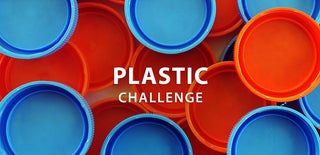Introduction: Two in One: Caliper and Offset Tool | a Plastic Project Using Acrylic
Usually when I'm making a project, I think of using a tool that helps me with accuracy. For example, when I want to measure the diameter of a pipe, gear, bottle, etc. which dimensions are uneven (non-flat object). And another problem arises when I want to create a guide line for the boundary of cutting objects, pasting other objects that are parallel to their outer borders.
However, in reality the tools on the market have a limited measuring length in the range of 16-20 cm and a limited function, namely only as a measuring tool that cannot be used to make auxiliary lines.
Because of that I wanted to make my own tool that I need using components that I have around me. I really hope this instructable can be very helpful for those who want to make a tool but do not have a 3D printer.
Caliper: Used to measure an object, especially a non-flat object
Offset Tool: Used to make a parallel line to an object at a specified distance. If you are familiar with Offset tool in AutoCAD, this offset tool works the same.
Supplies
In this project you are going to need:
- Acrylic sheet 6mm
- Ruler
- Circular saw
- Drill
- Iron file
- Screw
- Bolt
- Super glue
- Rubber glue
- Sand paper
- Grinder machine
Step 1: Modeling in Tinkercad
Before I made the actual product using acrylic, I made the design in Tinkercad, including the size and dimension that I used in this project.
You can learn how to make the design from this ible. You can also download the STL and SVG file from that ible.
Step 2: Draw and Cut
Draw the desired shape of the tool on the acrylic sheet. Cut it using a circular saw. For more detailed parts of the tool, see the final cut part in the picture.
For the accuracy of measurement of the tool, I had to sharpen the measure jaw (A & B part), using the iron file to cut the tip of the measure jaw.
Step 3: Place the Ruler
On modeling in Tinkercad, I already made the width of the ruler base identically with the width of the ruler I used. So in this step I glue down the ruler to the acrylic ruler base. I used the rubber glue in this step becuse I used an iron ruler which cannot be glued using a super glue. This component is a symetric rail of the caliper.
Step 4: Joint the Measuring Jaw and Offset Plat
See the first picture, and now we are going to joint four parts: B, C, D, and E. First you need to joint part D (stoper plat) and part B (measuring jaw) using the super glue. After that, joint part C under the measuring jaw. The E part supposed to be on the other side of the part B. This component is the slider of the caliper.
Step 5: The Slider Hook
To make the slider attached to the caliper base/ruler base, we need to make "hooks" to keep the slider on the track and stay accurate by making four prisms from acrylic. Then, glue down the hook on the sides of the slider (part B and E) as you can see in the picture. Make sure that the slider can slides smoothly through the ruler base. I needed to use the sand paper and the iron file over and over to smooth de slider.
Step 6: The Lock Screw
When we need the slider to stay in place, we need the lock screw. Make a hole on the side of the slider, then glue the bolt to the inner side of the slider. Put the screw inside the bolt.
Step 7: Pen Holder
When using this tool as an offset tool, it is important to make the pen stay in place to maintain the accuracy. Thus, I made a pen holder behind the measuring jaw. I cut an iron plate into the shown shape (following the shape of measuring jaw). And then I made a hole on the tip of the plate using 2mm drill bit. It is very suitable for a pen tip or a pencil tip, even marker tip.
Step 8: How to Use
Now we have a dual function tool made from items around us. It's easy, cheap, and very useful.

Participated in the
Plastic Challenge












